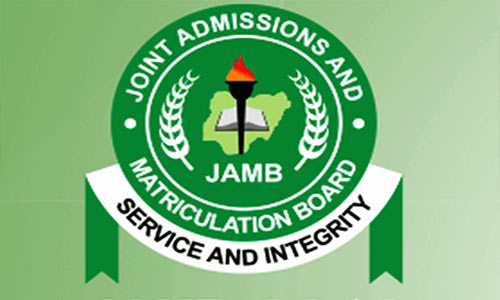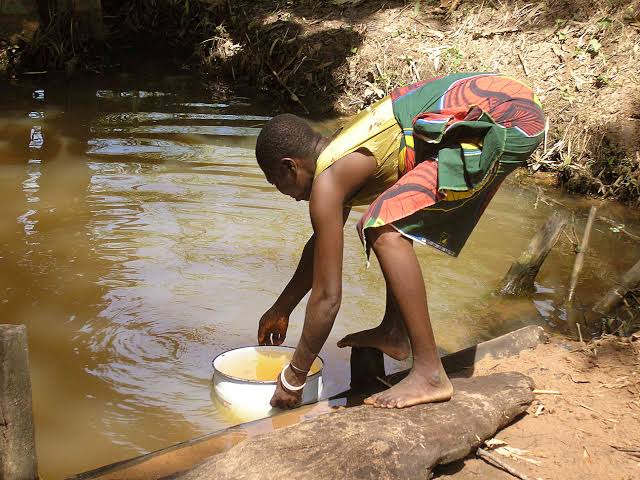By Gina Bella
Neglected Tropical Diseases (NTDs) have been relegated to the background for too long without proper recognition and investment from government. The results are devastative causing preventable deaths, disability and reduced productivity. REGINA OTOKPA reports that grave danger lies ahead if NTDs are not prioritised without delay.
An epitome of beauty, she sat on a stool not minding the broken stairs with her two legs somewhat heavy; no thanks to Lymphatic Filariasis commonly known as Elephantiasis, a condition that has left her wallowing in pains for over 30 years.
45 year old and full of life, Omolara Adeleke (Not Real Name) do not only live each day depending on people, she has lost her dreams of a fulfilled life, a flourishing business, two marriages and a sound night sleep only obtainable through the use of herbs or pain relieve medications, to the disease which gradually started as a itch 15 years ago.
“Sometimes, I look at myself and want to end it all. But because of my children I want to continue to live, especially my last child who is still very young.
“I used to go to the stream when I was growing up, i was a good swimmer. Each time I went to the stream and came back, I always had this itchy feeling but I didn’t have an idea what it was all about but after a while, each time it itches me, my body swells from my waist down to my legs.
“Because of my condition, I was only able to get to primary five. I decided to go into trading beverages but each time I go out, my legs swell the more with water coming out from it and flies roaming and perching on my legs so I decided not to go out again and the legs have been dry, not swollen, and without smell. I have been able to manage. I prefer to stay at home while my children fend for me.”
Omolara’s children are also affected; her two surviving children out of five have to abandon their dreams and fend for themselves far away from home. Her first son with aspirations of becoming a doctor had to abort his academic pursuit at the Junior Secondary certificate level due to funds to take up motorcycling (Okada Riding), while her daughter lives with relatives.
“My child that rides Okada is the one I had hope would become a great man. The Okada that he rides, I don’t like it because he wanted to be a medical doctor.”
When her left leg began to itch uncontrollably 30 years ago, probably it would not have degenerated into what it is today talk more of affecting the right leg few years ago if proper healthcare had been sought and on time. Sadly, Omolara’s family had believed it was a spiritual affliction of some sort.
Though young in spirit, both swollen legs from her hips down have confined Omolara to her house, hoping and waiting for the next meal or domestic help from a loving relative, friend or neighbour.
Unfortunately, Omolara is not alone in this ordeal; when 52 year old widow Folakemi Adesuwa (Not Real Name) began to experience itching and a swell on her legs each time she got pregnant starting from 12 years ago, she concluded it was a spiritual attack.
A petty trader and a mother of three, Folakemi’s countless visits to traditionalists only helped in worsening her situation.
“Whenever I am pregnant, the swelling in the leg will increase and whenever I deliver the baby, it would go down.
“I used to think that may be I stepped on something or it was some kind of evil forces and that is what I still think till date. Since I had my three children, the leg has refused to come down.
“If anything affects or touches the leg, water starts coming out and at the same time, it would be itching me first bringing out blood and later water.
‘’I sought help from traditional healers because I believed someone poured something on the ground for me to march on but when I realized the condition was not improving, I started going to a healthcare facility around my area.”
Omolara and Folakemi are amongst millions of Nigerians suffering the adverse effects and implications associated with Neglected Tropical Diseases (NTDs).
As the name implies, NTDs grouped into 20 disease conditions mostly found in tropical or Sub-Saharan region with poor population, hardly gets attention from the three tiers of government like other diseases largely because they tend to affect the world’s poorest found at rural areas, urban-slum or are less privileged.
At a media dialogue organised by the United Nations Children’s Fund (UNICEF) in collaboration with the Child Rights Information Bureau (CRIB), Federal Ministry of Information and Culture in Ibadan, Oyo state, experts drawn from different fields under NTDs, said the disease conditions were closely associated with poverty, poor sanitation, lack of safe water resources, sub standard housing conditions and a deficient health care system.
Besides the disabilities associated with NTDs, thy tend to inhibit a child’s growth, development or lead to preventable deaths.
Forms of NTDS
Nigeria accounts for 12 out of the 20 NTDs. Although all the states in Nigeria are endemic for one NTD or the other, it is estimated that 122 million people in Nigeria (more than half of the population) are at risk of contracting one or more NTD. This means that 2 out of every 3 Nigerians are at risk of contracting one or more of the 12 NTDs.
Of this number, 20 percent are pre-school age children, 28 percent are school age children (5 to 14 years old) and 52 percent are adult (15 years and above).
These diseases are Lymphatic Filariasis, Onchocerciasis (River Blindness), Schistosomiasis, Soil-transmitted Helminthiasis, Trachoma, Snakebite Envenoming, Rabies, Buruli Ulcer, Leprosy, Yaws, Leishmaniasis, Human African Trypanosomiasis, HAT, and Guinea-worm Disease.
Caused by preventable viruses, bacteria or protozoa, majority of persons are not even unaware of these diseases, their symptoms and devastating health impact.
OVERVIEW OF SOME NTDs IN NIGERIA
Available data from the Federal Ministry of Health indicates that 119.8 million people are at risk of elephantiasis (lymphatic filariasis), 51.4 million for river blindness (onchocerciasis), 28.8 million school age children and 20.5 pre-school age children are at risk of soil transmitted parasitic worn (helminthis), 26.8 million for trachoma while 23.8 million school age children stands at risk of contracting snail fever (schistosomiasis).
—LYMPHATIC FILARIASIS (Elephantises)
Lymphatic Filariasis is a disease transmitted by an infected female mosquito (anopheles) during human blood meals, with a life span of four to six years in an adult parasite.
Emmanuel Davies, Programme Manager, National Lymphatic Filariasis Elimination Programme at Federal Ministry of Health, revealed that a mapping completed in 2018 in the 774 LGAs indicates lymphatic filariasis is endemic in 583 out of 774 LGAs
representing 75. 3% of LGAs in the country.
He further explained that out of the 583 endemic LGAs, 528 (90.6%) of them with a population of 134.5 million people are currently under lymphatic treatment, while 39 LGAs (6.7%) with a population of 8.8 million people have stopped the mass administration of medicines in Nasarawa, Plateau, Cross River states and the Federal Capital Territory (FCT.)
With the cost of treatment running in millions of Naira, its no surprise that,”There are 16 (2.7%) endemic LGAs with population of 7 million people in four states, namely, Borno, Lagos, Oyo and Rivers, yet to receive lymphatic treatment as at end 2019.”
—ONCHOCERCIASIS (RIVER BLINDNESS)
Onchocerciasis commonly known as river blindness, is a disease in need of an urgent intervention. Currently endemic in 27 states and the FCT, no fewer than 50 million persons are currently at risk of the disease in Nigeria.
The Programme Manager, National Onchocerciasis Elimination Programme, Federal Ministry of Health, Micheal Igbe, who said the situation was alarming and requires urgent intervention from government and international community, raised the alarm that transmission of the disease is still ongoing in eight states, namely; Ogun, Ondo, Benue, Enugu, Anambra, Imo, Abia, and Cross River states.
Luckily, transmission has been interrupted in five states, namely; Kaduna, Plateau, Kebbi, Nasarawa and Zamfara, and 10 states including FCT are on track on eliminating the disease by the end of 2020.
TRACHOMA
Trachoma, caused by a bacterium, chlamydia trachomatic, is the leading infectious cause of blindness in the world, transmitted from person to person through direct contact, sharing of personal items like towels, handkerchief and other pieces of cloth often used to wipe the face or eyes, or by flies by transfering the bacteria from eyes of an infected person to eyes of a healthy person.
According to the Programme Manager, National Trachoma Elimination Programme, Dr. Nicholas Olobia, the disease is highly prevalent in northern Nigeria and affects the most vulnerable communities associated with poverty and low standard of living characterized by overcrowding, poor environmental and personal hygiene.
A recent mapping exercise conducted in 449 Local Government Areas (LGAs) in 24 states revealed a total of 122 LGAs endemic for the disease. They are; Benue, Plateau, Nasarawa, Niger, FCT, Jigawa, Kaduna, Kano, Katsina, kebbi, Sokoto, Zamfara, Bauchi, Borno, Gombe, Taraba, Yobe, Ebonyi and Edo states.
Olobia explained that the strategy for the elimination of trachoma is mostly through the SAFE formula; Surgical correction, Antibiotic treatment with either zithromax or tetracycline eye ointment, Facial cleanliness achieved through health education and improved hygiene, and Environmental sanitation to reduce breeding opportunities for the trachoma vector.
SCHISTOSOMIASIS AND SOIL TRANSMITTED HELMINTHIASIS (SNAIL FEVER)
Schistosomiasis also known as “snail fever” is a parasitic disease caused by tiny blood dwelling worms resident in contaminated water affecting infants and children with less developed immune systems due to low socioeconomic status.
Dr. Obiageli Nebe who oversees the programme at the Federal Ministry of Health, disclosed that 90 percent of the global over 200 million infections is found in sub-Sahara Africa, with over 700 million people currently at risk of the infection if transmission is not interrupted without delay.
Comprising of two forms; the intestinal and urogenital schistosomiasis, effectiveness of the disease depends on the species of the infecting schistosome worm, which is transmitted when larval forms released by freshwater snails penetrate human skin during contact with contaminated water. Additionally, schistosome worms infect people when they pierce through the skin into the blood system and travel with the blood to the liver.
SNAKEBITES
Snakebites is a major medical problem in rural communities failing to get the needed attention from government. Between 2015 and 2020, nonfewer than 39,458 cases of snakebite were reported in Nigeria out of which 633 deaths were recorded with 280 deaths in 2019 alone.
Snakebite is highly prevalent in Gombe, Taraba and Bauchi states, while it has low prevalent in Katsina, Jigawa, Rivers and Osun states.
Snakebite envenoming programme manager, Federal Ministry of Health, Fatai Oyediran who said the estimated incidence of snakebite in Nigeria is 497/1000, noted that the carpet viper specie of the snake is responsible for 90 percent of the bites and 60 percent of deaths.
Despite the high number of bites and deaths, availability of anti snake venom has been a challenge due to the dwindling budget witnessed in the past five years. Only about 5,000 to 6,000 vials of venom is procured by the federal ministry of health on an annual basis.
Oyediran who said the number of anti snake venom was quite low compared to the number of snake bite cases recorded yearly, pleaded with government and donor agencies to support the effort for local production of anti-venom to avert more deaths or deformity.
EXPLORING WASH FOR NTDs, POVERTY ELIMINATION
Despite the adverse effects and scary outcomes of NTDs, Water, Sanitation and Hygiene (WASH) have continued to serve as critical components in the reduction and eradication of all sorts of disease burdens including NTDs.
Tho a practice hardly cultivated in this part of the world, 100 percent access to safe personal hygiene, drinking water and environmental hygiene in the nooks and crannies of this country can control or eliminate NTDs for good.
UNICEF WASH specialist Bioye Ogunjobi, stressed that if the issues revolving around WASH was addressed using promotion of safe behavioural changes and WASH facilities are provided for the poor and communities endemic for the diseases. NTDs will be a thing of the past in the next five years.
“Adherence to proper hygiene and safe sanitation, including use of toilet, regular hand washing and clean environment could assist in eliminating NTDs”
Bioye further noted that eliminating NTDs equally means a likelihood of bringing a large number of people out of poverty, mostly in rural communities.
“Because these diseases do not allow people to be productive, there’s need for government to do something about it. There is need for public awareness on NTDs that will enlighten people about the diseases and how people can be affected by it. A lot of people have one of these diseases and think it is spiritual, that someone has attacked them. And this is why we have the WASH-NTDs integration designed to prevent NTDs.
DEALING WITH MYTHS, BELIEFS, MISCONCEPTIONS in NTDs
Just like in the case of Omolara and Folakemi, a lot of persons have died or presently suffering from a disability due to delay or refusal to seek proper healthcare due to myths and misconception around their diseases.
With a good number of spiritual fanatics around, people are quick to believe a disease or predicament is the handiwork of an enemy through spiritual attacks to destroy their lives and families. These negative beliefs or misconceptions in one way or the other affect treatment or eradication efforts as such persons never seek treatment until its too late.
Executive Director, HEAL Foundation, Mrs Chioma Mong, said one way to deal with this was through partnership between government and organisations in the grassroots, to demystify the religious misconceptions and beliefs around many of the diseases.
‘’There are so many myths that are not being addressed, in some communities where we have gone to teach WASH as a means of preventing NTDs when you see a man with a swollen scrotum, which of course, is lymphatic filariasis or elephantiasis, they say it’s a result of adultery or when you see a man urinating blood, they say it is male menstruation, whereas it is Schistosomiasis or snail fever.’’
FUNDIND IMPLICATIONS of NTDs
Most of the NTDs besides snake bites are known not to kill too early, they however cause quite a number of damages to the organs due to chronic infections, cause low productivity, promote poverty and poor nutritional status especially in children, pose devastative obstacle o the attainment of Universal Health Coverage (UHC), affect economic and social development and have significant impact on maternal, newborn and child health.
National NTD Coordinator, Dr. Chukwuma Anyaike, also notes that a sustainable economic development cannot occur without addressing NTDs, sadly, some states in Nigeria do not have access to the needed interventions, treatment and system capacity building needed to address these diseases.
Nigeria needs to place more emphasis on reducing the morbidity and mortality of NTDs to the barest minimum by ensuring adequate health education and sensitisation of all affected communities, through mass administration of drugs, ensure government at all levels take full responsibility and ownership of NTD programmes, place more emphasis on the importance of water, sanitation and hygiene and above all, invest resources into the NTD programme to control, eliminate and eradicate these disease once and for all.
The National Bureau of Statistics estimates that Nigeria contributes about 40% to the global burden of NTDs, but the country continues to enjoy a whopping 80% dependency on donor funds for treatment of patients and control of the disease for its citizens.
But even with this huge financial intervention, there is still a funding gap that needs to be urgently bridged. Currently, Nigeria needs N154 billion to eradicate NTDs in the next few years. A number of experts who raised concerns over Nigeria’s crave for donor funds, raise concerns that such an attitude may never guarantee elimination of NTDs.
According to Anyaike, “There are different NTDs that affect different states and governments need to know this, and there is need for them to invest in eliminating NTDs because of its impact on people’s lives. Funding is very important in eliminating NTDS. There is need for funding for supply chain management, and other logistics such as project vehicles. They are not going to pay for the drugs because the United States (U.S.) government provides the drugs. There is support from some states but this is very minimal, they need to do more, stakeholders charge.”
“But those affected are not the only ones that are less productive; their family members who may have to stay at home to take care of the infected member also have their potentials limited.
“NTD interventions should be mainstreamed with the Northeast Development/Rehabilitation Programme, Niger Delta/Ogoni Clean Up Project, Sustainable Development Goals Project in Nigeria and Home Grown School Feeding Project. The office of the Sustainable Development Goal Programme can be mandated to include funding for NTD activities on an annual basis.
He appealed to government at all levels to pay more attention to NTDs and increase its budget to save lives, banish poverty and improve the economy. There is need for government at all levels to release a proportion (0.05 per cent) of the total budget annually to implement critical activities, to fast-track NTDs elimination in Nigeria,” he said.
However, NTDs according to Anyaike can be tackled through mass administration of medicines, innovation and intensified disease management, integrated vector management as well as improved water, sanitation, and hygiene.
He also laid emphasis on the urgent need for government to strengthen ownership, advocacy and partnership, stating that, the challenges of the diseases are; poor funding, lack of information while some people have wrong ideas about the disease, and dirty environment.
It automatically behoves on government at all levels to take ownership, prioritise health financing and increase fundings to control these diseases or face the mirage of ever attaining a universal health care coverage in the country.
NTDs remains a serious threat to huge number of unsuspecting Nigerians and the negative impact could be disastrous and catastrophic if not attended to as quickly as possible.






























